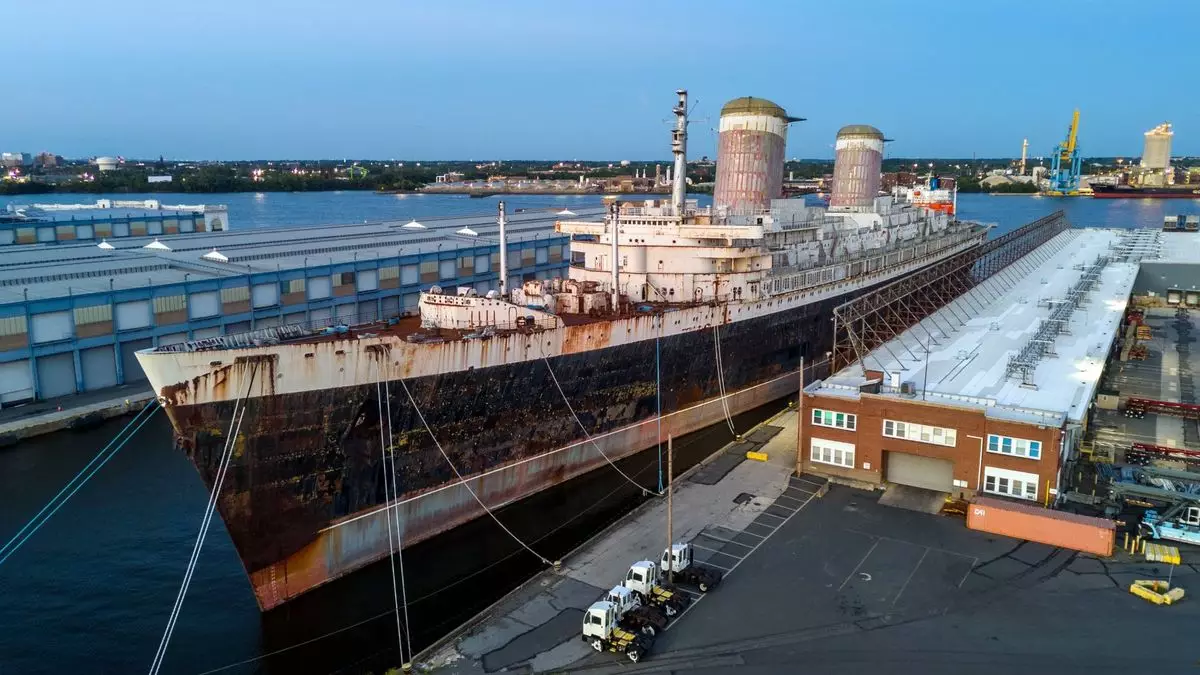The SS United States, once a flagship of the American passenger fleet, stands as a symbol of mid-20th century maritime engineering. Launched in the early 1950s, this ocean liner was not only a marvel of speed—holding the record for the fastest transatlantic crossing—but also a representation of the post-war optimism and technology. With a top speed of about 44 knots, it cut the journey from New York to England down to just three days and ten hours, a feat that remains unparalleled to this day. Although the vessel ceased operations in 1969, it continued to hold a place in the hearts of many and has been the focus of various attempts at revival and preservation.
Since its retirement, the SS United States has faced a daunting reality. Tethered to a pier in Philadelphia for decades, the ship has battled the dual challenges of age and obsolescence. As modern air travel ascended to dominate transcontinental travel, interest in traditional ocean liners waned. Despite numerous revival attempts—most notably by Norwegian Cruise Line and Crystal Cruises—the financially burdensome restoration proved too much, and plans were dropped. The vessel, fondly nicknamed “the Big U,” is at risk of being scrapped, leaving its fate uncertain. The SS United States Conservancy has worked tirelessly over the last ten years to save and repurpose the ship, advocating for its historic relevance and emphasizing its potential as a floating cultural landmark.
In a significant development, the Board of County Commissioners in Okaloosa County recently approved a contingent contract that paves the way for the SS United States to find a new life as an artificial reef off Florida’s northwest coast. The collaboration between the county and the SS United States Conservancy presents an ambitious plan that aims to enhance the local ecosystem while providing significant recreational opportunities for divers and fishermen. The conservancy envisions this project not merely as an act of preservation but also as a means of creating an educational museum focused on the ship’s storied legacy.
“We have invested over a decade into exploring how we could repurpose America’s Flagship, and though it is bittersweet, we believe turning it into an artificial reef will be a noble alternative to scrapping,” the conservancy articulated in a recent statement.
The proposed initiative to sink the SS United States into the ocean will come with challenges, including the ship’s thorough cleaning and the logistical demands of transport, which are expected to take roughly 18 months. With an estimated cost of $10.1 million—excluding funds for establishing a museum—the project reflects a commitment to ecological and educational goals. Destin-Fort Walton Beach is already positioning itself to enhance its reputation as a prime diving destination by integrating the historic vessel into the local marine environment, promising both practical benefits to local fisheries and a boost in tourism.
Jennifer Adams, the tourism director for Destin-Fort Walton Beach, highlights the dual benefit of the initiative: “The SS United States will not only serve as an artificial reef for divers to explore but will create vital habitats for the marine life crucial to our fishing community.”
The significance of the SS United States extends beyond its engineering merits and touristic potential. It is a vessel rooted in American history, symbolizing both luxury travel in its prime and the eventual decline of that industry. To many, it represents nostalgia for an era of oceanic grandeur—a time when the journey was as much a part of the experience as the destination. Converting it into an artificial reef aligns with a growing recognition of the importance of maritime heritage and the ecological responsibilities we carry as custodians of such artifacts.
While this decision may involve the ship’s physical demise, it also offers an opportunity to give it a form of rebirth—a transformation that allows future generations to interact with its history and significance while contributing to environmental conservation efforts. The project presents a unique intersection of remembrance, education, and ecological stewardship, restoring the legacy of the SS United States in a way that is both honorable and practical.
As the SS United States prepares for its final chapter, it prompts reflections on our relationship with maritime history. The decision to turn a symbol of luxury into an ecological asset showcases the shifting paradigms of national heritage—where growth and preservation can coexist. Only time will tell if this effort will succeed, but the ongoing advocacy serves as a reminder of the ship’s illustrious past and the committed efforts to ensure its legacy endures both above and below the waves.

